Celebrating Science -- Miller Reminiscences
Saul Perlmutter 
Miller Senior Fellow 2009
Professor of Physics, University of California Berkeley
Nobel Prize in Physics, 2011
Breatkthrough Prize in Fundamental Physics, 2015
"The most exciting conferences have experts in one science, of all ages and stages, presenting, without jargon, to experts in other sciences -- and then talking for hours over meals. Imagine that you could get to attend such a conference each week, even if just for one hour. That's the Miller Institute."
 Marla Feller
Marla Feller
Miller Fellow 1994- 1996
Professor and Head
Neurobiology Division, Department of Molecular and Cell Biology and Helen Wills Neuroscience Institute
University of California Berkeley
"The Miller Fellowship was critical for my transition from physics to neurobiology. After receiving my PhD in condensed matter physics, I pursued a postdoctoral research position at AT&T Bell Laboratories. There, a small group comprised of physicists and neurophysiologists were doing state-of-the-art neurobiology research. After completing this postdoc position, I had a tough decision whether to return to physics or continue my training as a neurobiologist. The Miller Institute was an outstanding opportunity to pursue my interdisciplinary training. My time as a Miller Fellow was marked by fantastic talks with the people who are passionate about their science – no matter what the discipline. This exposure was critical for me to determine my future career-path. When I returned to Berkeley as a tenured faculty member in 2008, I was thrilled to learn that the Miller program was still thriving. I have been fortunate to meet with many of the more recent Miller Fellows. They continue to be the most forward thinking young scientists I encounter."
David Chandler 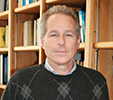
Miller Professor 1999-2000
Executive Committee of the Miller Institute 2002-2008
Professor Emeritus Professor of the Graduate School
Department of Chemistry, University of California Berkeley
"I feel so very fortunate to have been given the opportunity to benefit from enriching experiences of a decade-long association with the Miller Institute -- a Research Professorship for the 1999-2000 Academic Year, followed by service on the Institute’s Executive Board from 2002 to 2008. The connections it facilitated to so many brilliant Miller Faculty and Fellows in so many different fields of science, mostly through the weekly Miller Lunches, but also the Annual Symposium, significantly influenced science I did during that decade and since. In my research during the 1999-2000 Academic Year, the methods for treating rare but important events were formulated, leading to a statistical physics of trajectory space, a generalization of thermodynamics and the second law that holds at conditions far from equilibrium. Among the many significant applications, one of my favorites is the elucidation, in 2001, of the fundamental kinetic steps of pH. My then student and now colleague, Phill Geissler, recently helped in preparing a YouTube presentation about that process: https://www.youtube.com/watch?v=zeFSzt5x9uo"
 Fred Wilt
Fred Wilt
Miller Professor 1968-69 and 1985-86
Professor of the Graduate School of Cell & Developmental Biology
University of California Berkeley
"I was fortunate enough to spend two separate occasions as a Miller Professor. The first was in the 1968-69 season, and it was a god- send. I had been working for tenure, and then immersed in the teaching and research expected of a newly tenured appointment. When I received the vote of confidence from the Miller Institute, it felt like a wonderful validation of my work. The second occasion was not like the first. I was simply tired
of the repetitive nature of teaching and wanted time off, this time in 1985-86; I got it! If this had been all, I would have considered myself as very lucky. But shortly thereafter I was selected to serve as a member of the advisory board, and after one year I was elected to serve as Chair of the advisory board (1989-93). That was an important event for me. I got to know personally other members of the board, became familiar with the workings of the Institute, and more importantly, hired our senior staff responsible for all the Institute's business - Kathy Day. This opened a friendship of many years. And it allowed me to participate in the Institute business in many ways that I could never have done as a Professor. I am very grateful for the opportunities, especially with Kathy, Chancellor Tien, and other members of the Oversight committee. I shall always treasure this opportunity."
Mikhail Shapiro 
Miller Fellow 2011-2013
Assistant Professor of Chemical Engineering
Caltech
"When I was considering becoming a Miller Fellow, Julius Lucks (who was 3 years ahead of me) told me I should “do it for the happy hours”. I thought he was joking. After all, if I came to Berkeley it would be to do serious science, and surely I wouldn’t interrupt my experiments at 5pm on a weekday to go drinking. But reflecting on my Miller experience, which ultimately included 50 or so evenings at the faculty club with Jasper, Michael, Kathy and the other regulars (Barbara, Claude-Andre, Chang, Matt, Craig, Adam, Justin, Yogi, Brooke, Josh, Tim and others), the happy hours were the most memorable highlight. To say that they gave me a chance to have interesting scientific discussions with some of the most brilliant people in the world doesn’t quite capture the experience. It was more of a unique atmosphere where, once a week, I could step away from the intensity and focus of my own research, take a deep breath, relax, and soak in the company of kindred spirits. The topics spanned from science – the latest in galaxy formation, random numbers, human genetics – to life in general. Sometimes we even conducted experiments, such as the time when Justin’s t-shirt became a test case for light transmission through hydrated fibrous media. After each such evening, I would come back to the lab a bit tipsy but invigorated by the knowledge that I was in the company of people who love science as much as I do."
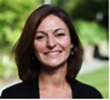 Feryal Ozel
Feryal Ozel
Visiting Miller Professor Spring 2014
Professor of Astronomy & Physics
University of Arizona
"My time at the Miller Institute as a Visiting Miller Professor was a rejuvenating experience. A lot of us scientists start out with a broad curiosity of the physical world, and over time, get more and more narrowly focused on the field we end up choosing (not to mention getting bogged down with administrative tasks as faculty). The opportunity to hear about exciting research in other disciplines during the lunch talks, from how micro-organisms swim to the dynamics of proteins, was exciting, refreshing, and a reminder for me of why I went into the world of academia in the first place.
The happy hour was also a memorable part of my experience, and not only for the reasons one might think. Yes, it was lovely to share a glass of wine with wonderful colleagues, but what stands out in my mind was the time when Michael Manga took the time to explain to me how ore deposits form in the Earth’s crust (distilling parts of his geology course to 30 minutes!) The gatherings also gave me the opportunity to discuss with other senior Miller faculty (Jasper Rine and Raymond Jeanloz among others) how to engage the Miller Fellows in social networking and what else the institute can do to prepare them for their careers. The Miller Institute is a place that beautifully combines the intellectual, collaborative, and social aspects of science."
Tanja Cuk 
Miller Fellow 2007-2010
Assistant Professor of Chemistry
UC Berkeley
"Sitting at a lunch table with Miller Fellows and awaiting the upcoming talk was a special experience. Everybody was engaged in a science-related conversation, without the stress that might produce with a direct colleague in your field. And everybody was also looking forward to the talk, because we knew it would be at a high level, show you why a field is important, and teach you something about it. You would inevitably have a question swarming in your head by the end of the talk, whether you asked it or not. The same feeling accompanies a whole weekend of talks that happen at the end of every year near Tomales Bay, inter-dispersed with good food, wine, and views. Other than the weekly lunches, this weekend retreat was my favorite part of the Miller Fellowship!
On another note: I entered as a Physics Miller Fellow, and ended up at the chemistry department at UC Berkeley! This kind of a leap would not have been possible without the fellowship. I worked with two advisors, one in chemistry and another in physics. I am now applying the transient infrared spectroscopy I was learning on the physics side to study catalysis! Phase transitions might not be so different from how reactants evolve into products, after all."
 Dustin R. Rubenstein
Dustin R. Rubenstein
Miller Fellow 2006-2009
Associate Professor of Ecology, Evolution and Environmental Biology
Director, Program in Tropical Biology and Sustainability
Co-director, Center for Integrative Animal Behavior Columbia University
"I learned two important things as a Miller Fellow: (1) physics is the tie that binds all of our research together; and (2) it takes a long damn time to roast a pig. I only took half of introductory physics as an undergraduate student, and after a few weeks of Miller lunches I quickly realized that I was at a disadvantage. Whether it was a talk in biology, chemistry, astronomy, or even earth sciences, basic physics principals underlay so much of the science that the fellows and professors were doing. Nearly all of what was discussed went beyond my basic understanding of force, mass, and acceleration. Yet, over the course of my three years at Miller Lunches, I learned a lot of important physics principals, some of which I even use to this day in my own research.
As important as all of the science discussions were at lunches, dinners, or the annual Miller Symposium, our time in Berkeley was also marked by uncertainty as we all searched for jobs. All Fellows must go through that period, but our three years was highlighted by the Great Recession, and the subsequent academic hiring freezes. Despite all of this, my cohort was particularly close. Not only did we begin the weekly Miller cocktails, but we greatly enjoyed our annual barbecues. We enjoyed them so much in fact, that we proposed having a pig roast in Tilden Park as our tenure was coming to a close. Kathy Day generously agreed to sponsor the afternoon event. Little did I know that roasting a suckling pig is a whole day affair. Argentinian chef and fellow Fellow, Reimundo Heluani, led the affair, and Jason Stajich and I assisted. We all arrived at the butcher not long after sunrise to pick up the pig, and then spent at least 8 hours roasting before the guests arrived. Needless to say, we enjoyed a lot of good wine that day while we sat by the fire, but ultimately, we produced a perfectly roasted pig, Argentinian-style. It was a fitting end to three great years as a Miller Fellow. Miller Picnic 2009."
Adam Summers 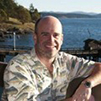
Miller Fellow 1999-2001
Professor - Biology - SAFS
Friday Harbor Laboratories
University of Washington
"The Miller Institute was the single most important experience in my development as a scientist. As a biologist straddling several fields, with a deep love of the history of my field, I was well aware of the importance of interdisciplinary thinking. However, there is no real opportunity in graduate school or afterwards to indulge in activities that fundamentally support interaction with other fields. Being appointed as a Miller Fellow came with perks that certainly propelled my research in new directions and at unanticipated speeds, but the real intellectual expansion came at lunch. I may have missed a lunch, maybe two; but those meals were my highest professional priority for those two magical years. Talks by my fellow post-docs, Miller Research professors and visitors left me buzzing for the entire afternoon. Looking back, the talks that made the most lasting impressions were from pure mathematics. The Institute attracted great math people and it was a joy to see talented people make extraordinarily difficult and abstract concepts approachable for smart people with little foundational knowledge. These demonstrations of virtuosity inspired me as I worked hard to communicate my science and the importance of my field to the general public. It was a golden time of my career and I appreciate both the initial appointment and the several invitations to return to hear talks at the annual symposium."
 Marcus Roper
Marcus Roper
Miller Fellow 2008-2011
Associate Professor of Mathematics
University of California Los Angeles
"I think that my brightest memories of being a Miller Fellow all involve falling in love, in some form or another. Falling in love with my future wife on the fire trail above the Berkeley campus, falling in love with California and with the UC system. It was basically impossible for me to leave the UC system after my Miller term was over (now I have tenure at UCLA). I still find it wonderful how any system can be so outstanding as a research-hub and at the same time have such an amazing, diverse student body...
The Miller Fellowship was such an incredible boon to me because I'm a math modeler. The reason that my field exists, the problems that wake me up at night, all come from cool experiments that someone is doing, somewhere, or maybe they are ideas for experiments that I dream of seeing performed. It is hard to be a math modeler if you are only in a math department. You have to stalk some corridors, sit in on talks that may contain no math (and on topics that you may not, going in, know much about). The Miller made it possible for me to do that: Berkeley is an amazing place for finding new experiments anyway, and your money isn't tied to any specific project or set of promises, and then to make it even more perfect they organize one talk each week, where someone deliberately makes an effort to explain what they are doing to people outside of their field. I actually discovered a few problems to work on just from those lunch time talks. One of my favorite (that lead to a really neat discovery on why some basal organisms discovered multicellularity) ended up becoming a Miller only collaboration between three Miller Fellows (myself, and other former fellows Mark Dayel and Rachel Pepper) and former Miller Executive Director Mimi Koehl.
The other cool thing about being a Miller Fellow is that no-one checks to make sure that you are actually staying within your discipline (why would they?). So I started doing bench experiments during my Miller term, working in Louise Glass' lab in Koshland Hall. This was a natural progression from being a modeler -- there were experiments that I dreamed about seeing performed, but for one reason or another no-one could do them. So I had to learn how to do them myself. Although I'm still a math modeler, I have an experimental lab now that I run in the math department at UCLA, that grew from these experiments. Retraining in this was deeply dependent on Louise (and to her graduate student, Anna Simonin who taught me), but it would not and could not have been possible without the Miller vision of funding great science (not great math and great physics and great cell biology etc. as separate topics, but great science as a unity)."
Milo Lin 
Miller Fellow 2012-2015
Assistant Professor, Systems Biology, Biophysics
University of Texas
Southwestern Medical Center
"The unique setup of the Miller Institute allows for that rarest of academic phenomena: deep interdisciplinary dialogue. Everything about the Miller experience is set up to foster appreciation, idea cross-fertilization, and collaboration between different fields. These experiences include the Tuesday lunch talks, the bi-monthly Happy Hours, and the annual Miller Symposium, which is essentially a TED conference for scientists. My favorite epiphany moment was learning from Visiting Miller Professor Elena Alvarez-Buylla that different plant cell types correspond to distinct fixed points of a single gene regulatory network. This was a striking demonstration of how biological behavior can arise as an emergent property of elementary interactions. My time as a Miller Fellow strengthened my habit of seeking out the latest developments in fields far outside my own."
 Jeremy Thorner
Jeremy Thorner
Miller Professor 1984-85 and 1999-2000
Professor of Biochemistry and Molecular Biology
University of California Berkeley
"This academic year (2015-16) marks the start of my 42nd year on the faculty here at UC Berkeley. During the course of that time, I have had the very great honor and privilege of being appointed as a Miller Professor twice, each time for a full academic year (1984-85 and 1999- 2000). On both occasions, I felt like a galley slave who had been granted his release and, emerging from the depths of the hold, was able to bask in the sunlight and breathe the pure clean air of intellectual and personal freedom. I found the weekly lunches, presentations, retreats, and other gatherings and associations with each year's crop of Miller Fellows, other Miller Professors, and Visiting Miller Professors to be mind-expanding and exhilarating. I must say, however, that access to the weekly free food at the Faculty Club was not good for my waistline. The greatest benefit of those Miller years was, of course, the opportunity to focus exclusively on the basic research conducted by the graduate students, postdocs, undergraduate honors students, and other research personnel in my laboratory in the former Dept. of Microbiology and Immunology (1984-85) and, after its creation as of 1 July 1989, in the Division of Biochemistry and Molecular Biology (now Division of Biochemistry, Biophysics and Structural Biology) in the Dept. of Molecular and Cell Biology (1999-2000). Being right there in the trenches with them on a daily basis was right where the general needs to be. It was emancipating to be rid of the frequent absences from the lab that occur during any normal academic year (preparing for and giving lectures, writing and administering examinations and quizzes, attending faculty meetings, Qualifying Examinations, Annual Thesis Guidance Committee Meetings, presentations by faculty job candidates, etc. etc.). I have rarely had such important and prolific periods in my research program. In 1984-85, we published our discovery of the first authentic prohormone processing enzyme ever identified in any eukaryotic organism. In 1999-2000, we published ten research papers and some reviews, including the discovery of a protein kinase signaling module that controls lipid and protein homeostasis in the plasma membrane of a eukaryotic cell, which we continue to study to this very day. Of equal value were the new relationships I made with fellow faculty in other campus departments whom I otherwise would not likely have encountered. In this regard, I would like to give a particular shout-out to Arup Chakraborty, formerly a Professor of Chemical Engineering here UC Berkeley (now a Professor and Director of the Institute for Medical Engineering and Science at MIT), who sat down and had lunch with me at one of the Miller Retreats at the Marconi Conference Center in Point Reyes Station and thereupon commenced a scientific and personal friendship that also continues to the present day."
Sheila Patek 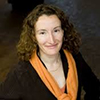
Miller Fellow 2001-2004
Associate Professor,
Duke University
"When I look at my research program today, I see many threads that run directly back to my time at the Miller Institute. Eleven years later, I am still collaborating with my fellow Miller Fellows – we threw each other challenges as postdocs and we’re still having fun tackling them together as faculty. The Miller Institute provided the best possible training in how to talk across disciplines, and this training has been key to launching and running a large interdisciplinary grant in my lab. Those Miller conversations taught me to ask “dumb” questions, ignore hierarchy, and listen, listen listen. Finally, the Miller Institute showed me the power of a community that shows up, through the simple act of eating lunch together once per week. In today’s fast-paced, over-committed research lifestyle, there are few regular events to which everyone shows up to talk broadly, openly, and with great fun, about interdisciplinary and basic research."
 Brian K Hall
Brian K Hall
Miller Visiting Research Professor 1997
University Research Professor Emeritus
Dalhousie University, Halifax
"Hosted by Drs. David and Marvalee Wake in the Department of Integrative Biology between January and April 1997 I experienced what was, both at the time and in hindsight, an enormously exciting time in evolutionary-developmental biology (evo-devo) at Berkeley. The department was making its first major hire in evo-devo. During the first six weeks of the term, six candidates each spent several days in the department, presenting their research and interacting with faculty and graduate students. Additionally, David, Marvalee and I ‘organized’ a weekly graduate seminar on evo-devo that was open to all. I say ‘organized’ because the graduate students did all the organization: selected the topics from suggestions we provided, made up the reading lists, and led the weekly sessions. An average number of 36 and as many as 60 students, post doctoral and faculty attended our lively and often provocative discussions as we explored the various ways in which genes, environment and organisms interact during development and evolution. Berkeley in early 1997 was the best place on earth for an evolutionary developmental biologist to be. I thank the Miller Institute for providing me with the opportunity to share the experiences, which have influenced my approach to development and evolution ever since."
Maryam Modjaz 
Miller Fellow 2007-2010
Associate Professor in Astrophysics,
Center for Cosmology and Particle Physics, NYU
"My time as a Miller Fellow with all the various Miller activities was truly enriching and empowering on so many levels - the vibrant scientific discussions, the opportunities of professional development and the truly wonderful community of scholars and people - since after all, scientists are also people!"
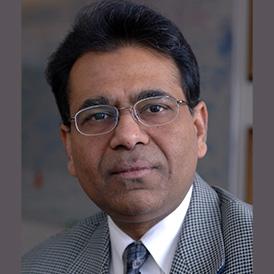 Arup Chakraborty
Arup Chakraborty
Miller Professor 2000
Robert T. Haslam Professor of Chemical Engineering
Professor of Chemistry, Professor of Physics, Professor of Biological Engineering, MIT
"In the autumn of 1999, I was not especially excited about my scientific work. The work that I had done to bring together electronic structure calculations and engineering problems was popular now, but I did not find it intellectually satisfying. Thus, over the preceding six years, with help and encouragement from David Chandler, I had studied sophisticated approaches in statistical physics. I had worked on some problems which taught me how to carry out relatively complex calculations using such approaches. But, I understood that these problems were “biology-inspired physics problems” that had nothing to do with biology. At this juncture, a colleague at Berkeley showed me a paper on a topic in immunology, and wondered whether it had something to do with my past work on one of these “biology-inspired physics problems”. I understood very little of this paper, but enough to know that it had nothing to do with my past work. In the Spring of 2000, I was awarded a Miller Research Professorship. With this time off from teaching and committees, I decided to spend a week amusing myself by trying to understand this immunology paper. The week became two months as I struggled to learn the meaning of the words that are the jargon of immunology, but I was intrigued by everything I was learning. Ultimately, I realized that approaches from statistical mechanics could help shed light on some of the questions raised by this paper. Thus, began my work at the intersection of statistical physics and immunology, which has been, and continues to be, most satisfying. The time and freedom provided by the Miller Professorship was invaluable for my transition to immunology, and so I am very grateful to the Miller Institute."
Jason Stajich 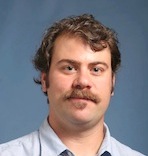
Miller Fellow 2006-2009
Department of Plant Pathology and Microbiology
UC Riverside
"I met Tim Stearns at the 2011 Miller Institute retreat. Tim works on cilium and centriole proteins using yeast and human cells as models using cell biology and genetic tools, but was exploring ways to use the flagellated fungi as model systems, too. My lab studies evolution of fungi and has been looking for ways to do more cell biology. We exchanged info over the meals and also by email after the conference with some periodic contact. In around 2013 Tim started growing one of the chytrid fungi Rhizoclosmatium globosum and we reconnected as my lab was preparing samples for genome sequencing through efforts in the 1000 Fungal Genomes project. Benefiting from the chance opportunity we had to talk during the Miller retreat we've since started a collaboration interpreting this genome and have submitted a collaborative grant to expand our efforts on this system to study both chytrid fungi biology and the evolution of flagella."
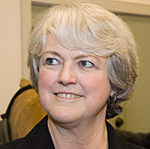 Beth Burnside
Beth Burnside
Miller Professor 1991
Professor Emerita of Cell & Developmental Biology
former UC Berkeley Vice Chancellor for Research
"The Miller Institute is one of those rare things in life that has literally no down side. It's all great. Great postdocs, great experiences for faculty and visiting scientists. A visionary gift to the university and its many beneficiaries!"
Vaughan Jones 
Mathematician, Miller Professor Fall 1992
Fields Medalist, National Academy of Sciences
Distinguished Companion of The New Zealand Order of Merit
Honorary Vice President for Life of the International Guild of Knot-tyers
Miller Institute Advisory Board Member 2013 - 2015
"The pressures on a faculty member's time are enormous and the Miller Professorship provides an extraordinary opportunity to escape these bonds and devote oneself full time to one's research. Many of the greatest living mathematicians have visited Berkeley through the Miller programs."
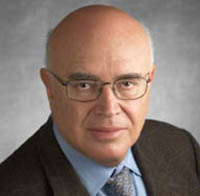 Gabor Somorjai
Gabor Somorjai
Miller Professor 1977 -1978
Miller Senior Fellow 2009 - 2014
University Professor of Chemistry, University of California Berkeley
National Academy of Sciences, National Medal of Science
The Priestley Medal, The Wolf Prize
"The Miller Institute is an elite organization where young professionals with the highest achievement levels in sciences and engineering are rewarded with fellowships that further embellish their reputation."
Raymond Jeanloz 
Geophysicist, Miller Professor Fall 1992
Miller Institute Executive Director 1998-2003
Miller Senior Fellow 2011-2016
MacArthur Prize, National Academy of Sciences
"The Miller Institute is unique in its impact on science, advancing the frontiers of knowledge... effective in its cross-disciplinary impact by standing on the capabilities of some of the best scientists in the world, from junior researchers to seasoned professionals."
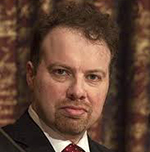 Adam Riess
Adam Riess
Miller Research Fellow 1996-1999
Thomas J. Barber Professor of Physics and Astronomy
Johns Hopkins University & Space Telescope Science Institute
Nobel Prize in Physics 2011
"The Miller Fellowship provided the best combination of freedom and support I could imagine."
Genevieve Graves 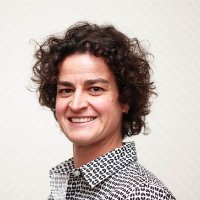
Miller Fellow 2009 - 2012
"I love the symposium, and I miss it. Even in academia, there are not enough opportunities to exchange ideas with people across a broad range of fields. I was incredibly lucky to be part of the Miller Institute—it’s one of those unique life experiences—and it’s a thrill to get to drop in again, meet the new batch of fellows, and remember what a special group of people it is."
Lord Robert M May 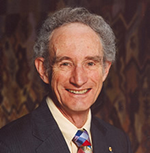
Oxford OM AC Kt FRS Theoretical Physicist & Biologist
Former President of the Royal Society
Former Chief Scientific Advisor to the PM & UK Government
"The Miller Institute adds hugely to the collective intellectual life of UC Berkeley. It is a jewel."
Mark Johnson 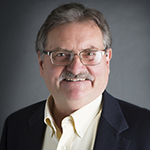
Visiting Miller Professor 2017
Arthur T. Kemp Professor of Chemistry
Yale University
"The month of April, 2017 in Berkeley as a Miller Visiting Professor was a very rewarding experience. As I learned, the model for this Institute is both unique and effective. A mix of scientists, with ages ranging from their 70s to 20s, are brought together in a spirit of collegiality and scholarship in a number of interesting venues. These range from the official lunchtime talks to a formal dinner to informal cocktail hours. I found all of this to be an excellent mechanism that brings younger scientists into casual contact with seasoned professionals in a way that fosters free exchange of ideas, anecdotes, and friendship. The not-so-hidden benefit of this system is that Miller Postdocs and young faculty are embedded in a high level, intellectually stimulating atmosphere that explores a broad scope of scientific fields and levels of achievement. Altogether, this is a class act in which I would encourage all to participate, from the senior scientist to those finding their way in a rapidly changing scientific landscape. So Kudos to the institute staff and the board that maintains this level of performance."
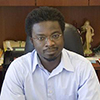 Richmond Sarpong
Richmond Sarpong
Miller Professor 2017- 2018
Professor of Chemistry
University of California Berkeley
"The Miller Professorship was transformative and disruptive... in a good way!! It expanded my horizons and challenged me to better communicate the essence of my work with others."
Ronald C. Cohen 
Miller Professor 2015-2016
Professor, Department of Chemistry
Professor, Department of Earth and Planetary Science
University of California Berkeley
"My year as a Miller Professor was an incredible luxury. I had a chance to focus exclusively on my research. It was especially beneficial to think deeply about new research directions that I might pursue. I am now beginning two new projects; one at the interface between atmospheric chemistry and public health and another focused on the role of forests on the Nitrogen cycle. Along the way I recruited a postdoc to Berkeley who has since arrived as a Miller Postdoctoral Fellow."
 Vivek Malhotra
Vivek Malhotra
Visiting Miller Professor 2016
Chairman, Cell and Developmental Biology
CRG, Barcelona, Spain
"I had a glorious time as a Visiting Miller Professor at UC Berkeley. I made new friends and bonded with my old colleagues. The time away from my regular responsibilities at the CRG was well spent in planning key lines of research that should keep me busy for a few decades. "
Iswar Hariharan 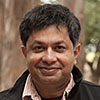
Miller Professor 2019-2020
Department Co-Chair and Professor of Cell and Developmental Biology, UC Berkeley
